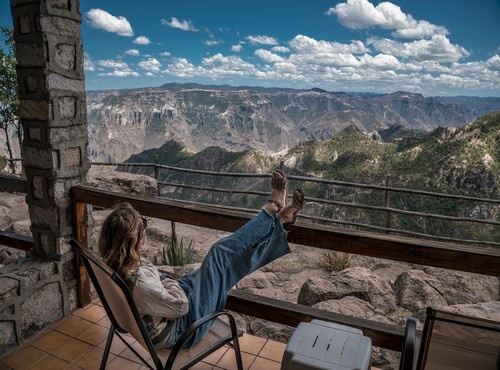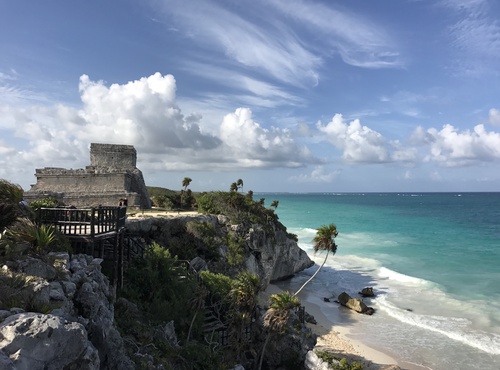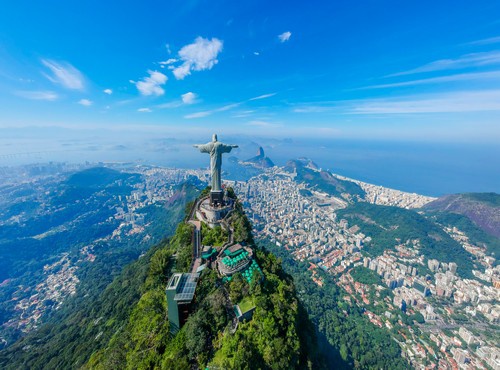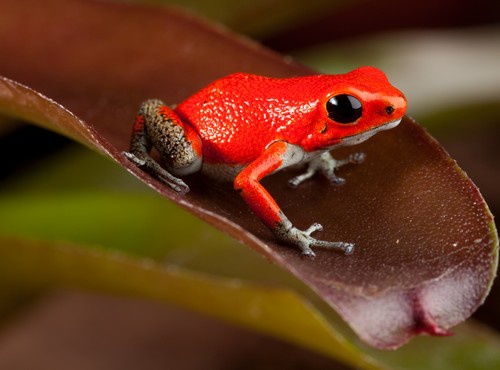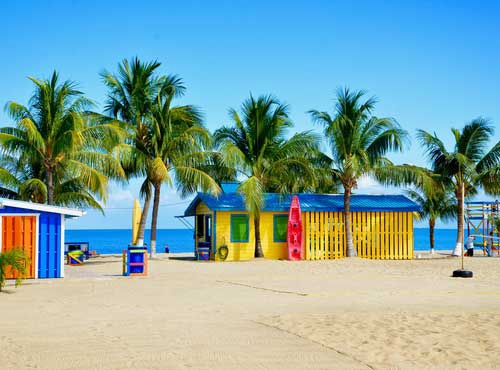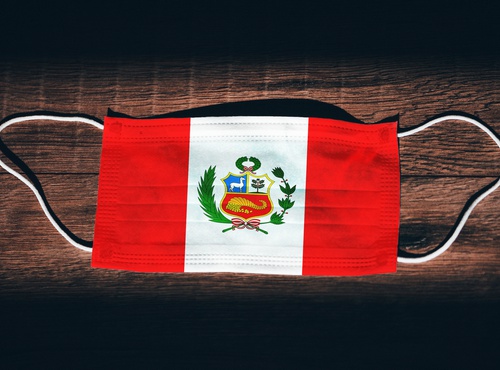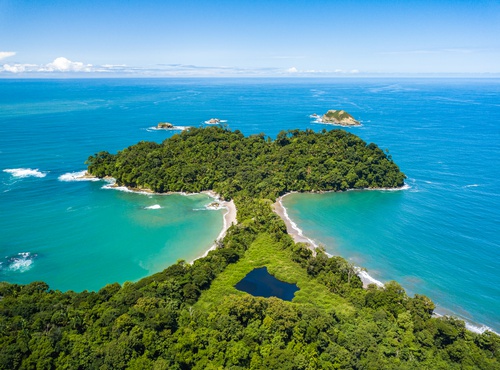
Written by:undefined undefined
Published: 05-04-2023
Guatemala is the Mayan heart of Central America. Home to ancient historical sites and impressive ruins, dense jungles, colorful architecture, lively markets, and towering volcanos, Guatemala is a diverse and beautiful country ready for the adventurous traveler to explore. The rugged mountains and jungles offer adventurous travelers a chance to get off the beaten path and explore pristine landscapes and the Maya archaeological sites are a must-see for history buffs, including the impressive Tikal, an ancient Mayan city and a UNESCO World Heritage Site. Here are some useful travel tools for a visit to Guatemala.
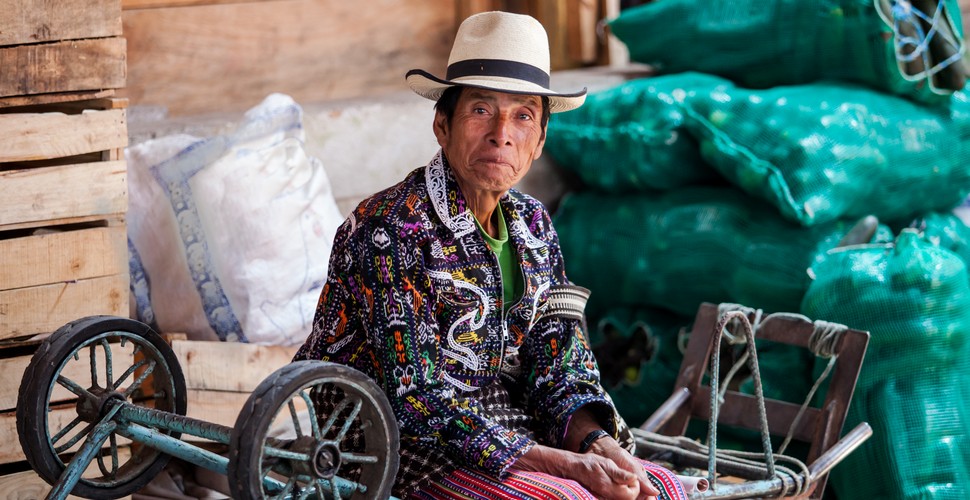
Guatemalan Native
Getting There
Most people get to Guatemala by plane, arriving in the capital, Guatemala City. Flores Airport, near Tikal, also has a few flights from Belize City and Cancún. Guatemalan land and sea entry points are relatively hassle-free, unless you’re bringing your own transport, in which case you can expect plenty of red tape, dubious entry fees, and delays.
Air Travel
Most flights to Guatemala are routed through a few US cities: Atlanta, Chicago, Dallas, Fort Lauderdale, Houston, Los Angeles, Miami, and New York. You’ll also find several non-direct options via San Salvador (with Taca) and Mexico City (Aeroméxico and Interjet). Prices vary wildly, depending on the season and promotional fares. There are no direct connections from Canada to Guatemala, your best bet is to fly via one of the US gateway cities. There are no return flights from Toronto. If you are traveling from Europe, there are no direct flights from the UK to Guatemala; most itineraries travel via the US cities of Atlanta, Houston, New York, or Miami. Other options include flying via Madrid on Iberia, via Amsterdam and Panama with KLM, or Mexico with a number of airlines, and then on to Guatemala with a Mexican airline.
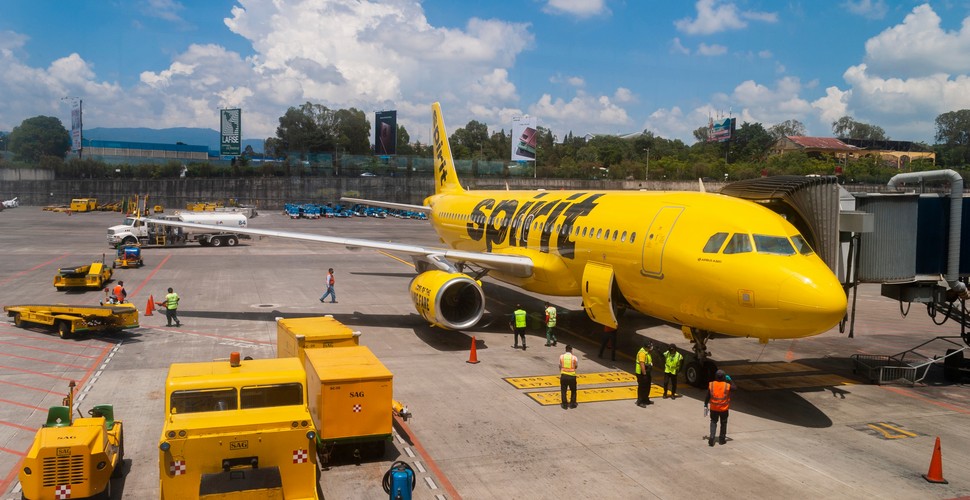
Guatemala City Airport
Travel by road
Buses
From southern Mexico, nine daily buses leave Tapachula for Guatemala City. One daily minibus connects San Cristóbal de Las Casas with Antigua, passing by drop-offs for Huehuetenango, Quetzaltenango, and Panajachel. There’s also a daily bus route linking Cancún with Flores, with one minibus taking you to the Belize–Mexico border and another connection traveling via Belize City and the Guatemalan border to Flores. Shuttle bus connections between Palenque and Flores are another option. There are buses run by King Quality and Tica Bus between Panama City and Guatemala City via Costa Rica, Nicaragua, Honduras, and El Salvador. These involve nights in hotels on the way and several days of travel
Plan your trip
Good planning is the key to a successful trip – and for a treasure trove like Guatemala, the most prized destinations could be right around the corner.
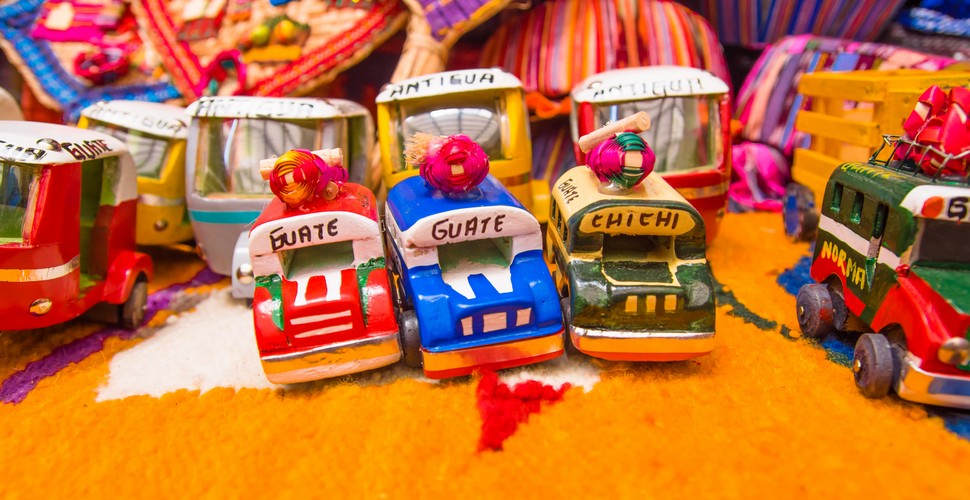
Clay Chicken Bus Ornaments
Getting around Guatemala
By plane
The only scheduled internal flight currently operating in Guatemala is from the capital to Flores. Flights cost US$220–250 return (one-way from US$130) and take fifty minutes (as opposed to some eight hours on the bus). Two airlines, Taca and TAG, offer a total of three daily return flights (see Dolores). Tickets can be bought from virtually any travel agent in the country.
By bus
Buses are cheap, convenient, and can be wildly entertaining. For the most part, the service is extremely comprehensive, reaching even the smallest of villages.
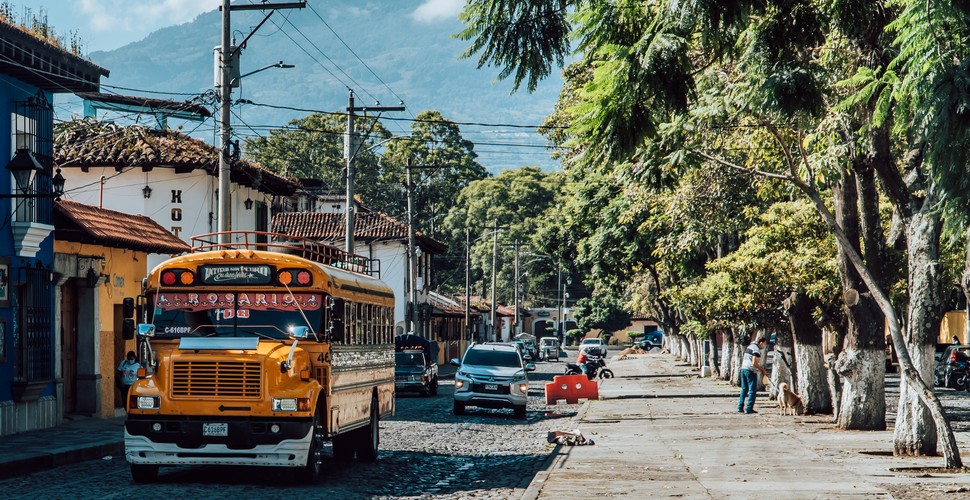
Old School Bus
Chicken buses
Guatemala has two classes of buses. Second-class or “chicken buses”, known as camionetas, are the most common and easily distinguished by their trademark clouds of thick, black, noxious fumes and rasping exhausts. While travel by second-class bus may be uncomfortable, it is never dull, with chickens clucking, music assaulting your eardrums, and snack vendors touting for business. Almost all chicken buses operate out of public bus terminals, often adjacent to the market; between towns, you can hail buses and they’ll almost always stop for you – regardless of how many people are already on board.
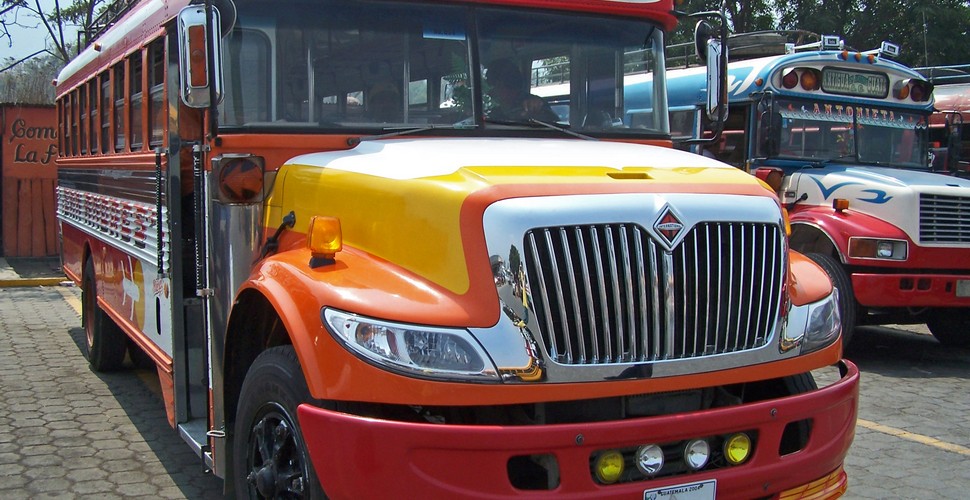
Chicken Bus
Pullman
The so-called Pullman, usually a Greyhound-style bus, is rated as first-class, and tickets can be bought in advance. These “express” services are about 25 percent more expensive than the regular buses – around US$1.50 an hour, though there are some very luxurious, more pricey options. Services vary tremendously: some companies’ buses are double-deckers, with reclining seats and ice-cold air-conditioning, while other operators use decrepit vehicles. Each passenger is allocated a seat and all Pullmans are pretty punctual. Pullmans usually leave from the private offices of the bus company and they only run the main routes, connecting the capital with Río Dulce and Flores/Santa Elena, Quetzaltenango, Huehuetenango, the Mexican border, Chiquimula and Esquipulas, Puerto Barrios, Cobán, Copán and the rest of Central America.
Minibuses and Pick-ups
Non-tourist minibusses (microbuses) are very common in Guatemala, particularly on paved roads. They usually operate from the main bus station or use a separate terminal close by. Travel on microbuses costs about US$1.25 per hour.
In remote parts of Guatemala, pick-ups supplement microbus services, and for the sheer joy of travel, you can’t beat the open-air views (unless it’s raining!). Passengers are charged about the same (around US$1.25/hr).
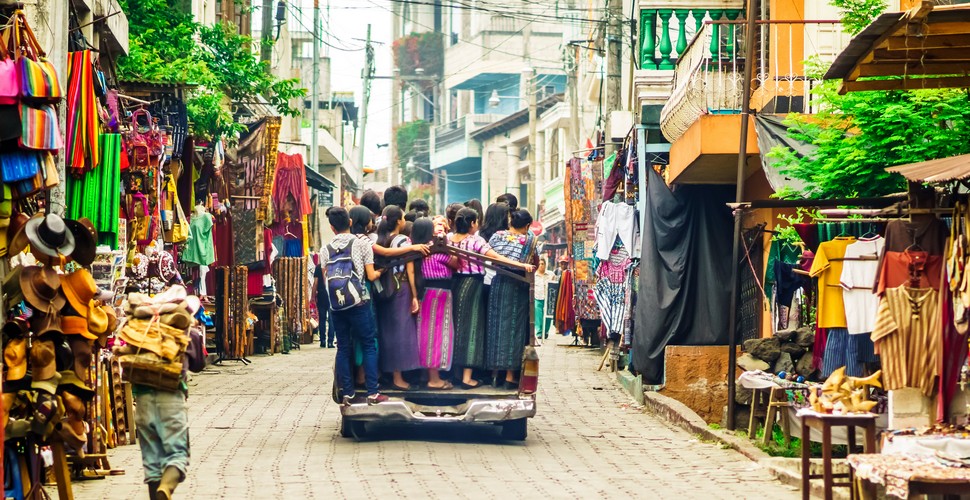
Chichi Pick-up
Shuttle Buses
Providing fast, nonstop links between the main tourist centers, shuttle buses are very popular in Guatemala. Conveniently, passengers are picked up from their hotels, so you won’t have to lug any heavy bags around. Services are expanding rapidly and now cover virtually everywhere that tourists travel in any number, and it’s usually easy to organize an “especial” service (for a price) if your destination is not on a regular route.
Taxi and tuk-tuk
Taxis are available in all the main towns in Guatemala, and their rates are fairly low at around US$3 for a short ride (or US$5 in Guatemala City). Outside the capital, metered cabs are non-existent, so it’s essential to fix a price before you set off. Local taxi drivers in Guatemala city will almost always be prepared to negotiate a price for an excursion to nearby villages or sites (perhaps US$35 for a half-day or US$60 for a full day). If you can organize a group, this need not be an expensive option.
Three-wheeled Tuk-tuks have proliferated throughout Guatemala in the last few years, operating as taxis, buzzing around the streets, Bangkok-style. They are common in most towns, except in Guatemala City and Quetzaltenango. It’s best to fix the fare in advance.
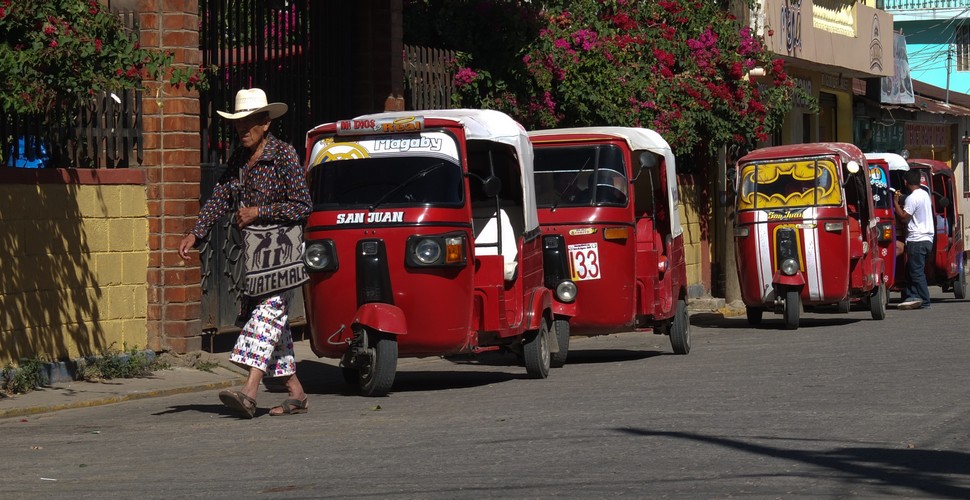
Tuk Tuks
Ferry and boat
In Petén, there are a number of possible boat routes, including tours around Lago de Petén Itzá from Flores. Several terrific boat trips start in the town of Sayaxché, including the trip to Lago de Petexbatún and Aguateca and along the Río de la Pasión to Ceibal.
Along the Pacific coast, you can explore the mangroves of the Chiquimulilla canal from Monterrico and Paredón.
Guatemala’s most spectacular boat journey is through the Río Dulce gorge, either starting in Lívingston or Río Dulce Town. The public boats that cover this route will give you a quick glance at the scenery but you can’t beat a slow cruise; trips are best organized in Livingston. Volcano-framed Lago de Atitlán is another idyllic place to experience by boat: public lanchas connect all the main villages.
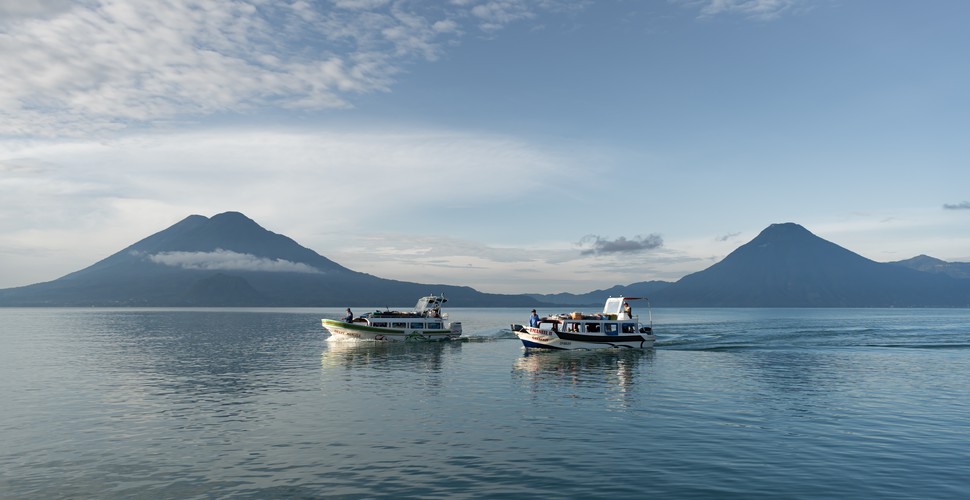
Atitlan Ferries
The best time of the year to visit
When it comes to the weather, there’s no bad time to go to Guatemala. The country has one of the most pleasant climates on earth – the tourist board refers to it as the “land of the eternal spring” – with much of the country enjoying warm days and mild evenings year-round.
Guatemala’s rainy season between May and October may put some travelers off, but with downpours mostly limited to late afternoon, it won’t ruin your plans. The worst of the rain falling in September and October. In Petén, however, the season can extend into December. Visiting Petén’s more remote ruins is best attempted between February and May, as the mud can be thigh-deep during the height of the rains.
The busiest times for tourism in Guatemala are between December and March, avoiding the rainy season, and again in July and August. Language schools and hotels are fullest during these periods, and many of them hike their prices correspondingly.
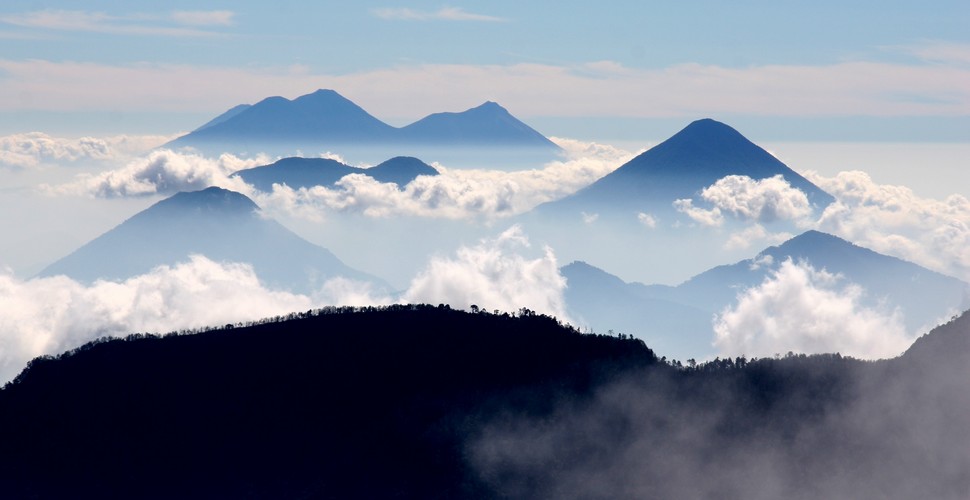
Cloudy Guatemalan Volcanos
On-Line Resources
Skyscanner: They search small websites and budget airlines that larger search sites tend to miss. They are hands down the number one place to start.
Hostelworld: This is the best hostel accommodation site out there with the largest inventory, best search interface, and widest availability.
Booking.com: The best all-around booking site that constantly provides the cheapest and lowest rates. They have the widest selection of budget accommodation. In all my tests, they’ve always had the cheapest rates out of all the booking websites.
SafetyWing: Safety Wing offers convenient and affordable plans tailored to digital nomads and long-term travelers. They have cheap monthly plans, great customer service, and an easy-to-use claims process that makes it perfect for those on the road.
LifeStraw: For reusable water bottles with built-in filters so you can ensure your drinking water is always clean and safe.
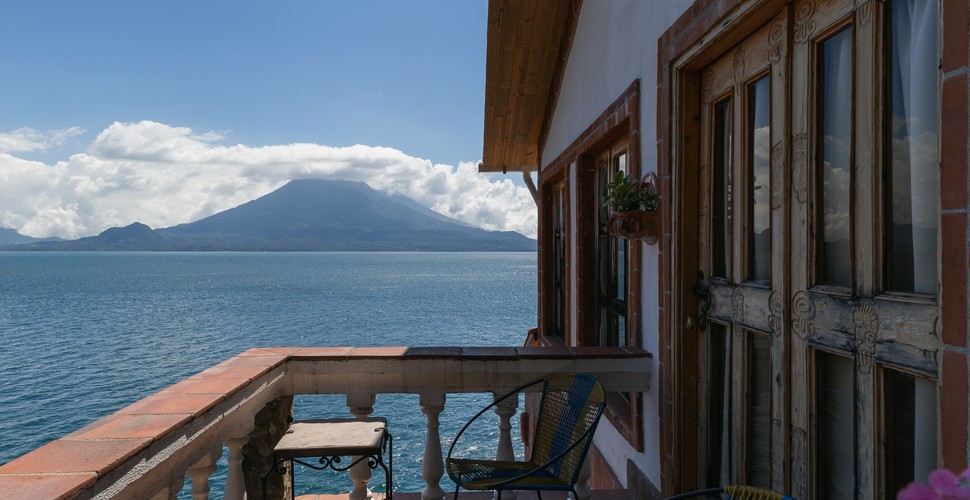
Atitlan Hotel
Currency
Named for the national bird, the official monetary unit in Guatemala is called a Quetzal. The Guatemalan Quetzal (GTQ) is divided into 100 centavos. The remarkably stable exchange rate of the Guatemala Quetzal to the U.S. dollar is approximately 8 to 1, which means two Quetzals are the equivalent of a U.S. quarter.
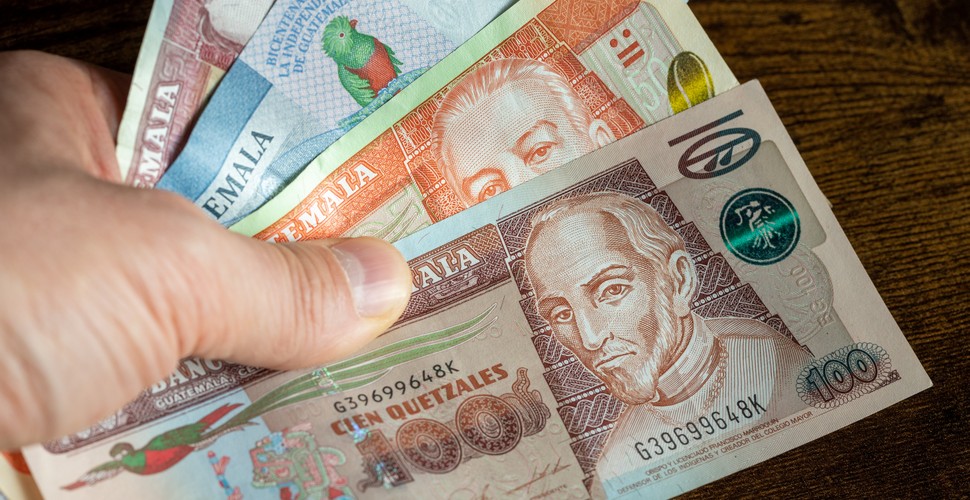
Quetzals
Credit Cards and ATMs
Most major credit cards are accepted in Guatemala, in the bigger cities, especially Visa and Mastercard. American Express may not be accepted at smaller restaurants, hotels, and tour operators. Like with any other destination, it is wise to carry some cash with you at all times. 5B is the only ATM in Guatemala that works with foreign debit cards. Luckily 5B ATMs are located in all the main tourist spots, it’s not posted anywhere that it’s the only bank that accepts international debit cards.
Plug Sockets
In Guatemala, there are two types of power plugs and outlets: Type A and Type B. Both types are used in airports, hotels, restaurants, etc., but they differ in terms of shape.
Type A: Type A plugs have two flat prongs on either side of the plug. Mostly used in the United States, Canada, Mexico, Central America, China, Japan, Taiwan, Philippines, and Thailand.
Type A outlets only work with Type A plugs.
Type B: Type B plugs have a round prong in the center with two flat prongs on either side. Mostly used in the United States, Canada, Mexico, Central America, Japan, Taiwan, Philippines, and Thailand. Type B outlets can be fitted with either Type A or Type B plugs.
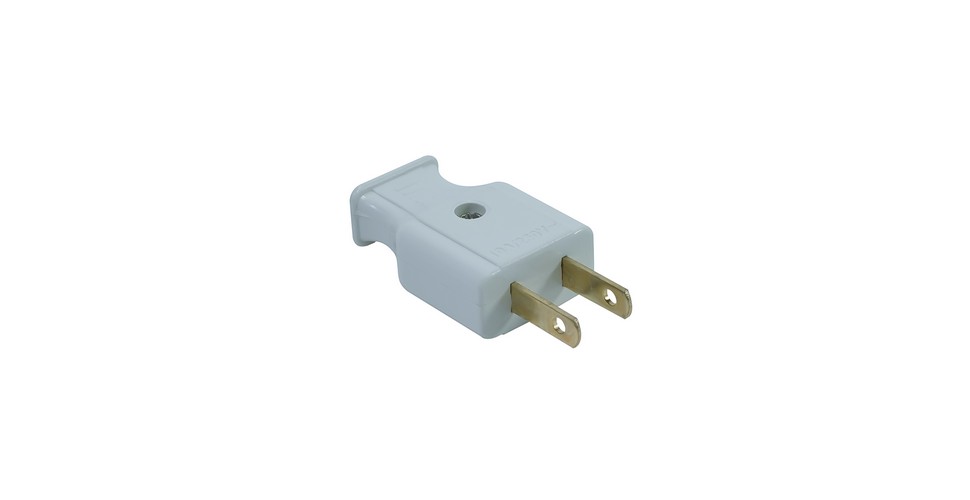
Type A Plug
Safety
Guatemala is a generally safe country for visitors. Depending on who you ask, that might change. Others will say that criminal activity is a big problem. Luckily, illegal activity remains pretty low in popular tourist areas, and it is generally found in other areas that are not usually frequented by tourists.
If you need more information about Guatemala, contact us here!







